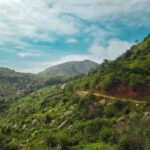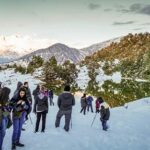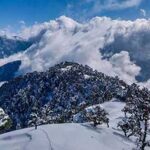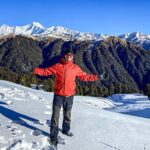
Have you decided to do that first trek of your life? Great! Going on the Himalayan trek is a thrilling experience.
However, making a decision is not everything. You need to prepare yourself well for the trek and ensure its success.
Wondering, how do I do that? Don’t worry!
Having done numerous treks over the years, I have figured out what to do and what not to do on a trek and how to prepare for it.
Therefore, in this blog, I will share the best trekking tips for beginners to help you save energy and time and increase the success rate of your trek.
To start with, I have divided the trekking preparation tips into four categories;
- Planning Tips
- Preparation Tips
- Packing Tips
- On The Trek Tips
Planning for The Trek
Planning effectively is the most vital factor in completing any task, including a trek. Hence, follow the below tips to plan expertly.
1. Plan at Least 3 Months Prior
If you want to be well-prepared for your first trek, it’s best to plan it at least three months before the actual trek date. This gives you enough time to prepare yourself physically and mentally and gather trekking gear or hiking essentials for beginners.
Furthermore, planning in advance also helps you book flights, trains, buses, or any other transport at a cheaper price. This also implies trek costs. If you book a trek with any organisation in advance, you will surely get a good discount.
2. Pick Easy and Short Trek

As this is your first trek, it’s important for you to pick a trek with a short duration, minimal elevation, easy grade, and shorter distance.
Doing so increases the chance of you completing the trek while enjoying the beauty of the mountains. Moreover, going on an easy trek has fewer chances of hitting Acute Mountain Sickness (AMS) or any other injury due to low altitude and easy grade trail.
So, I suggest you start with any weekend treks in the himalayas, as they are easy-grade treks with low elevation. Perfect examples of such treks are
- Nag Tibba Trek
- Chopta Chandrshila Trek
- Bhrigu Lake Trek
- Kareri Lake Trek
- Benog Tibba Trek
- Deoban Trek
- Binsar Wildlife Sanctuary Trek
- Prashar Lake Trek
- Chirbatiya Trek
- Bijli Mahadev Trek
- Manali Kaisdhar Trek
- Chandranahan Lake Trek
3. Choose the Safest Season
Besides the trek difficulty level, it’s also important for you to consider the season.
As you are a beginner, it’s best to opt for a summer trek or post-monsoon trek. During these months, the weather is mostly clear and pleasant, making it easier to trek.
On the contrary, it increases the difficulty level if you choose to trek during snow or monsoon.
Trekking in snow or rain requires more effort. You can’t trek during bad weather; camping during snow or rain is also challenging. Dealing with such conditions can also make you fall ill.
Hence, it’s best to start with a summer trek and gradually opt for a snow or monsoon trek as you gain experience.
4. Trek With Reputed Trekking Organization
Once you have finalised the trek and season, it’s time to decide whether to do the trek in DIY (Do it yourself) style or opt for a trekking company.
As a beginner, I suggest you book a trek with one of the best trekking companies.
Wondering why?
Doing a trek yourself means you are responsible for everything on the trek. You have to carry all the trekking equipment, including tents, sleeping bags, food supplies, and utensils. You are responsible for booking transport, getting permission from the forest department, planning the trail and itinerary, and, in the end, cooking food.
This is challenging for the first-time trekker and can even completely mess up your trek. On top of that, it threatens your life in the Himalayas, as you might get stuck somewhere or lose direction.
In contrarst, if you plan a trek with a trekking company, you need not worry about anything. They take care of everything as they have a team of experts for every department. Also, they guide you from trek preparation to completing the trek. All this makes it easier for you to enjoy the trek.
You should opt for a DIY trek only when you gain experience.
5. Book in Groups and During Festivals
If you want to save some bucks and pay the minimum possible for the trek, do the following two things;
- Book a trek for a group of at least 3 people, as trekking companies offer discounts for group bookings. The larger the group, the better the discount.
- Book your trek during a festival or national event. All trekking companies offer huge discounts during these events, so take advantage of that.
6. Consider Experienced Trek Partners
As a beginner, it’s best to consider friends who have experience trekking. Such friends can guide you through the whole preparation process and help you overcome challenges during the trek. Additionally, they can be your motivation factor.
Preparation For the Trek
Once done with planning, it’s time to prepare well for the trek. Here are some tips to enhance your preparation;
1. Start Your Physical Training a Month Before
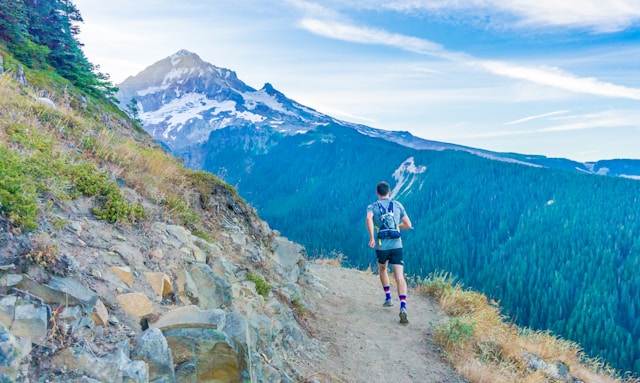
To get physically fit for a trek, you must start training at least one month before your trek. Starting your day early gives you enough time to build muscle strength and recover from possible injuries. It also helps you prepare mentally.
Start your training as early as possible. It could be two or three months, but it should be at least a month.
2. Include Running, Weightlifting and Breathing Exercise in Training
Trekking requires a lot of stamina to climb mountains and cover a large distance. Therefore, it becomes vital to include running in your training.
Initially, start jogging for 1 km and gradually increase the distance day by day, aiming for 5 km. Once you are able to jog for 5 km, start reducing the time. After a few days of regular training, you must aim to cover 5 km in 40-45 minutes.
Doing so significantly increases your stamina, strengthens your legs and core, and increases lung capacity.
Along with running, you should also start lifting weights to build strength in your legs and hands. This is necessary as you carry the load on your back during trekking, which requires strength in your legs to keep walking tirelessly. Additionally, strength in your hands helps you lift loads and balance your body during any fall or slips.
You should also include breathing exercises in your training to improve your lung capacity. Increased lung capacity helps you to acclimatise better and continue trekking even at high altitudes, where oxygen levels are usually low.
3. Train with a Backpack and Trekking Shoes
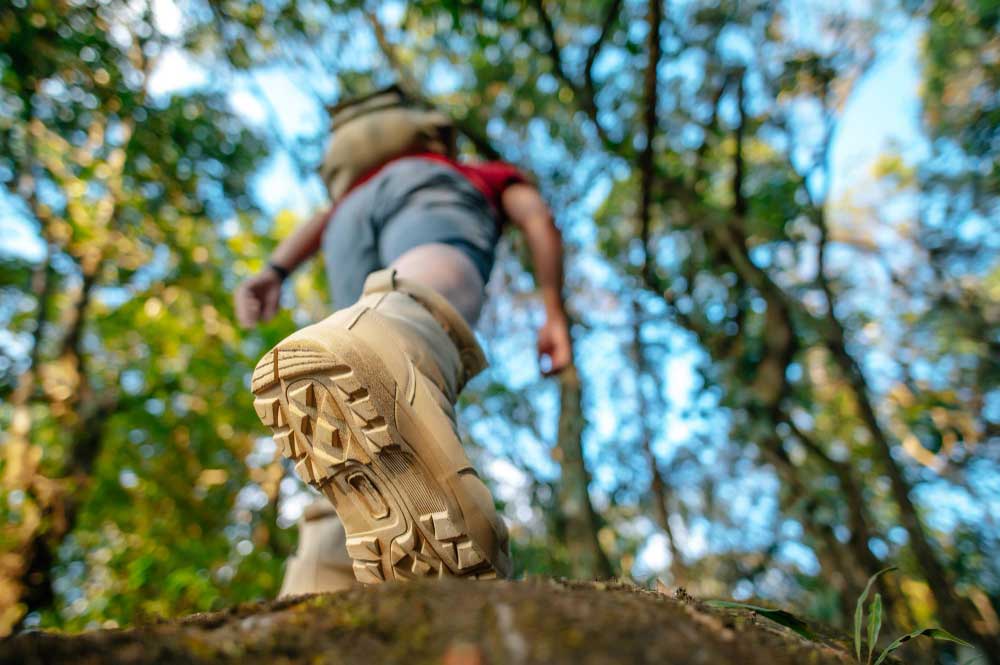
Another thing you must remember while training is to train with a backpack and trekking shoes.
Training with a backpack helps you figure out whether it’s comfortable and if all the compartments and straps are in fine condition. Furthermore, you get used to it because picking a backpack for the first time on a trek is uncomfortable and can even ruin your trek plans.
Fill your backpack with all the stuff you need for the trek, and climb stairs or walk long distances in the park.
While doing so, also ensure that you wear your newly bought trekking shoes. This helps break your trekking shoes and adjust them according to your feet. It also reduces the chances of blisters, which usually happen when wearing new trekking shoes.
4. Go For a Day Hike
If you can go on a day hike near your city, you must do it. Doing so will help you get a taste of what happens on the trek, making you comfortable with such an environment. Moreover, you will be mentally and physically prepared for your first trek.
Nevertheless, don’t forget to carry a backpack and wear trekking shoes on the day hike.
Packing For The Trek

Want to pack smartly for the trek and avoid carrying unnecessary items or forgetting necessary items? Consider the following tips;
1. Create a Check List
Before you start packing, create a checklist. It will help you pack all the essential trekking gear you need.
Wondering what to include in this list? Don’t worry!
Check out this blog on Trekking essentials for beginners. It has a list of all the items you will need on a trek, with details.
2. Pack Light
The most important thing you need to remember while packing for the trek is to pack light. That means you must focus on carrying the least possible trekking gear and prefer lightweight items. This helps you avoid any challenges of carrying extra weight.
3. Pack According to Weather
When you pack clothes and trekking gear according to the weather, you carry only the essentials, which reduces the unnecessary load.
For instance, if you are packing for a summer trek, there is no point in carrying heavy feather jackets and thermal wear as they increase your backpack weight.
4. Do Carry Waterproof Gears
Weather is usually unpredictable in the mountains. Hence, you must be prepared to tackle any situation.
Rain is a major concern, even on clear summer days. To be prepared for the rain, carry a backpack with a rain cover, a poncho (Rain Jacket), and some poly bags. Use these poly bags to pack clothes to prevent them from getting wet.
5. Pack Heavier Items at the Bottom
Always put heavier items in the bottom compartment to maintain the balance of your backpack. These include trekking shoes, jackets, and sleeping bags.
6. Avoid Cotton Clothes
While trekking, you sweat a lot. Thus, wearing cotton clothes is not a good idea.
Cotton clothes tend to absorb sweat and get wet completely. When wet, cotton clothes lose their insulation properties and don’t trap enough warm air close to the body. This results in a decrease in body temperature, which can make you ill on a trek.
Instead of cotton clothes, use synthetic clothes. They don’t absorb sweat and quickly dry.
7. Carry Clothline and Clips
Excessive sweat causes clothes to get wet during the trek, which must be dried regularly. However, drying clothes on the trek is challenging.
This is where carrying clothline and clips can help. Tie the clothesline on trees or trekking poles near your tent and allow your clothes to dry. Besides, you can also use the clothesline in emergencies. For example, you can put split shoes together, tie a torn backpack, or use it to rescue.
8. Carry Trekking Poles
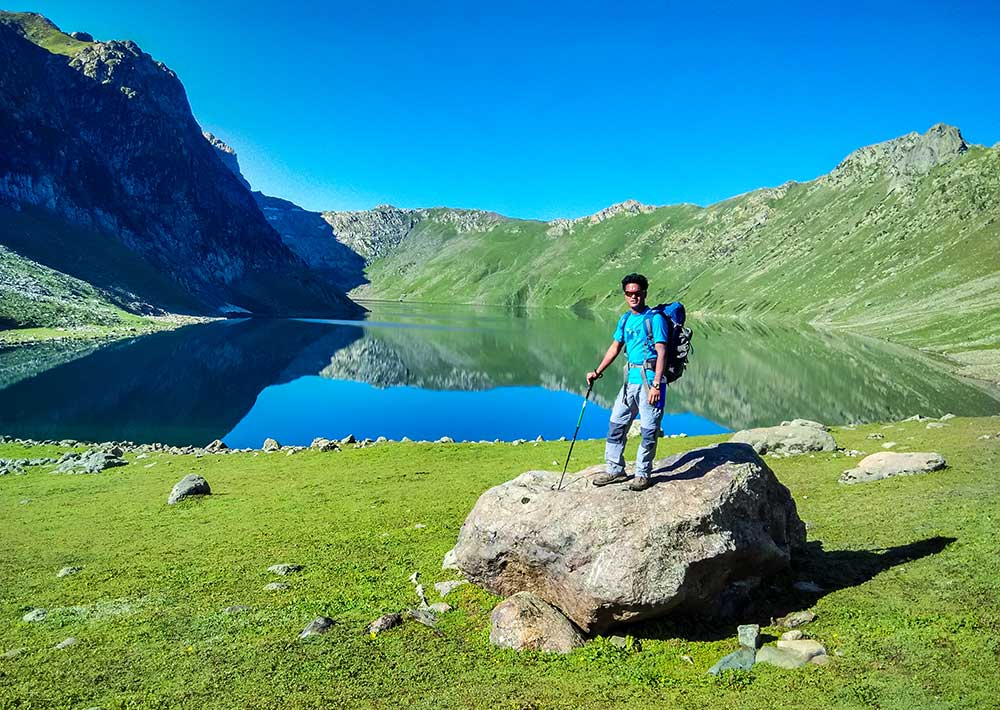
Although you can trek without trekking poles, using them has advantages.
When you use trekking poles on the trek, they help you divide the load with your legs. This results in less strain on your legs and increased speed. Furthermore, you can use the trekking poles to balance your body while walking and in case of slips. They also offer you more stability.
9. Opt for a Betadine Solution to Purify Water
It might sound crazy, but using a betadine solution to purify water is one of the easiest and most flexible ways. Numerous studies have proven this effective.
To purify the water, first put four drops of betadine solution in one litre of water and wait for 30 minutes. This kills all the bacteria and germs in the water and makes it fit to drink.
Isn’t it amazing? You need not carry an expensive filter bottle to purify water. Instead, you need just a small bottle of betadine solution, which is economical and easily available.
On the Trail Tips
You have selected a suitable trek, prepared yourself well, and packed all the essential items. Now, it’s time to venture on the trek. But before that, let’s explore some on trail best trekking tips for beginners to help you make your experience safe, responsible, and adventurous.
1. Start the Day Early
Starting your day early has numerous advantages.
- You get a lot of time to prepare yourself and get ready for the trek.
- Trekking in the early hours is easy, as the sun’s impact is far less compared to the afternoon.
- You find less crowd on the trail.
- You find clear weather. The weather usually changes in the second half of the day.
- Reaching early on the campsite gives you the advantage of choosing your preferred spot for camping.
2. Take a Break After Every Hour
Continuously trekking for long hours doesn’t make sense. It makes you too tired.
The best approach during a trek is to take a short 10-minute break after every hour. This gives your body time to replenish.
You can have quick snacks like fruits and sip some water.
3. Mind Your Steps
Trekking or hiking is not a race; it is a marathon. You need to pace your steps according to the terrain.
That said, take long steps on the flat surface and short steps on the steep section of the trek. Moreover, avoid stepping on rocks, logs, and trees. This is important to avoid injury.
4. Protect Your Skin and Eyes
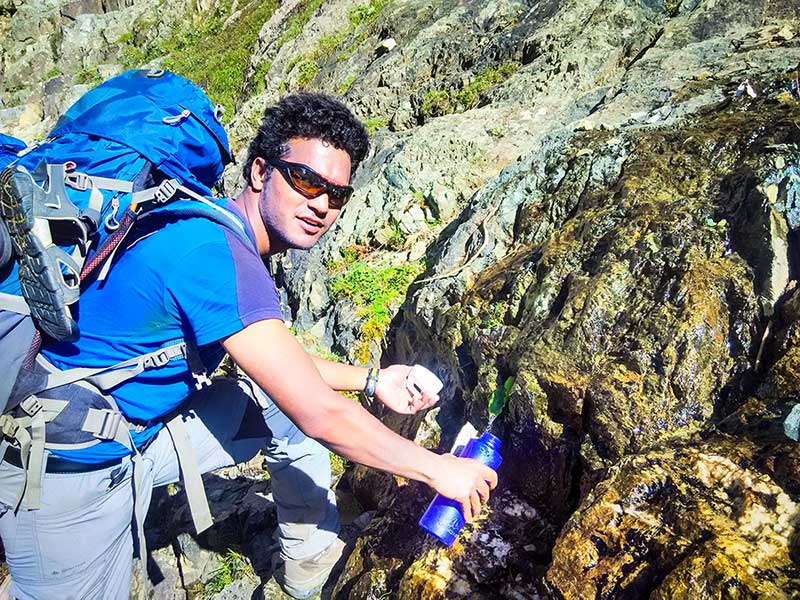
The skin and eyes are the most exposed parts of the body to sunlight on the trek. Long exposure on multiple days can lead to deep sunburn on the skin and damage to the eyes.
Therefore, it is vital for you to always put sunscreen on your exposed body parts and use sunglasses to protect your eyes. However, always ensure to prefer:
- Sunscreen with 50 SPF
- Sunglasses with UVA and UVB protection
Sunscreens with high SPF protect skin from sunlight at all altitudes, and sunglasses protect eyes from sun glare near water sources or on snow, which might also lead to snow blindness.
5. Wear a Rucksack Properly and Use Trekking Poles
While wearing a rucksack, first ensure it is packed in a balanced manner, as discussed earlier. Further, when you wear your rucksack, ensure the hip straps are at waist level and tied properly; the shoulder and chest straps are also levelled and tied.
This is essential to distribute the rucksack weight between your shoulder, waist, and back. Doing so avoids injuring your back and shoulder and makes it easy to carry a rucksack.
6. Stick to a Particular Trail
Losing your way is very easy while trekking, and it can be life-threatening for you. This has happened numerous times in the past few years in Uttarakhand and Himachal, leading to the death of trekkers.
Therefore, whenever you go on a trek, have a trusted map of the trail and stick to it. It is always advisable to hire local guides and follow their instructions seriously, as they are experts on the trail. Moreover, before venturing on the trek, do thorough research about the trail.
7. Stay Hydrated
You sweat a lot during a trek or hike, leading to dehydration.
Dehydration on a trek is a serious danger. You can develop acute mountain sickness(AMS), faint, and be exhausted.
To refrain from such danger, always keep yourself hydrated.
Carry a water bottle with you and sip water occasionally. You can also add electrolytes to it and drink juices or any other sports drink.
8. Eat Nutritious Food
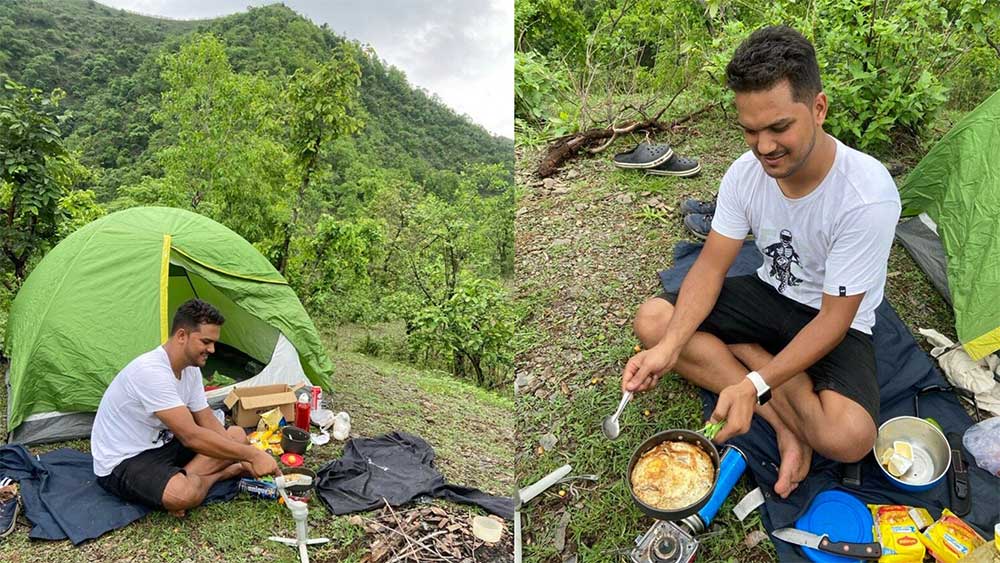
Trekking and hiking are rigorous activities that require a lot of energy and strength. Therefore, eating nutritious food can help you refuel your body’s nutrients.
You can eat fruits, vegetables, pulses, or anything healthy and easy to carry on a trek.
9. Follow Trekking Etiquettes
When on the trek, it’s your responsibility to keep the trail clean and follow the trekking etiquettes as mentioned below:
- Walk in a single line to give way to others, especially uphill climbers.
- Don’t play loud music or speak loudly. Doing so will disturb the wild animals and other trekkers. After all, you came on the trek to enjoy the natural sounds.
- Don’t litter. Make sure you carry all the garbage back with you.
- Don’t plug flowers or plants.
- Don’t feed wild animals.
- Avoid campfire.
- After the nature call is done, properly close the pit.
FAQ Regarding Best Trekking Tips for Beginners
What is the golden rule of trekking?
Start your trek early, pack light, and strictly follow the advice of trek leaders and guides.
What is the best age to start trekking?
You can start trekking as early as possible. But remember to start with one-day hikes and gradually increase days and altitude with experience.
What is difficult trekking?
A trek is difficult when it is long, has steep sections, is at a high altitude, and takes more than four days to complete. Furthermore, the weather on the trek is harsh, such as snow or rain.
Which is the easiest trek?
Any trek that can be done in one or two days has a shorter distance, low altitude, and is easily accessible. A few examples are Nag Tibba Trek, Deoban Trek, and Benog Tibba Trek.
How many days is trekking?
Trekking days can range from 1 day to 15 days. This varies from trek to trek.
Conclusion
Based on my expertise and experience, these were the best trekking and hiking tips I could offer you. I hope that following these tips will surely make your first trek a safe and memorable one. Furthermore, they also answer your question about “how to start trekking in India.”
If you have any questions regarding the best trekking tips for beginners, leave your comment below.

